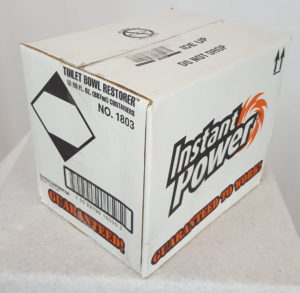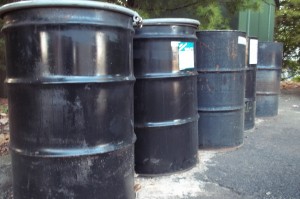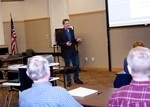The Bullet:
The Pipeline and Hazardous Materials Safety Administration (PHMSA) is amending the Hazardous Materials Regulations in response to 24 petitions for rulemaking submitted by the regulated community between February 2015 and March 2018. This final rule updates, clarifies, or provides relief from various regulatory requirements without adversely affecting safety. PHMSA also, as of the effective date of this final rule, withdraws its September 28, 2017 enforcement discretion regarding the phase-out of mobile refrigeration systems.
Final rule published in Federal Register (85 FR 75680)
Who:
Issued by the Pipeline and Hazardous Materials Safety Administration within the U.S. Department of Transportation (USDOT/PHMSA).
- For further information contact:
- Steven Andrews at (202) 366-8553 in the Office of Hazardous Materials Safety / USDOT/PHMSA / 1200 New Jersey Avenue SE / Washington, DC 20590-0001.
What:
- Document Citation: 85 FR 75680
- Agency/Docket Number: PHMSA-2017-0120 (HM-219C)
|
Like this article? Subscribe to my Monthly Newsletter No marketing emails! |
In this final rule, PHMSA is:
- Revising § 173.31 to prohibit the use of tank cars with shells or heads constructed of non-normalized steel in the transportation of poison-by-inhalation hazard (PIH) materials by rail after December 31, 2020.
- Harmonizing availability of limited quantity shipping exceptions for more than 100 entries for corrosive materials in the Hazardous Materials Table (HMT, § 172.101).More…
USDOT/PHMSA is increasing the numbers of hazardous materials eligible for the limited quantity exception
- Revising Column (8A) of the HMT for “UN2014, Hydrogen peroxide aqueous solution” to allow limited quantity packaging for this material by referencing the exception in § 173.152. More…
- Revising § 172.302(b)(2) to allow a minimum height of 12 mm (0.47 inches) for a proper shipping name marked on a portable tank with a capacity of less than 3,785 L (1,000 gallons).
- Revising § 173.28(c)(1)(i) to allow for regulatory flexibility for cleaning metal drums for reuse and clarifying the existing cleaning standard.
- Revising § 173.5b to allow for the continued use of portable and mobile refrigerator systems placed into service prior to 1991 that are rated to a minimum service pressure of 250 pounds per square inch (psig).
- Incorporating by reference updated editions of multiple Compressed Gas Association (CGA) publications into § 171.7.
- Removing the reference to special provision 103 in § 172.101 from Column (7) for four HMT entries.
- Removing the words “manufactured before September 1, 1995” from § 180.417(a)(3) to allow for an alternative report for cargo tanks manufactured after September 1, 1995.
- Revising the basis weight tolerance provided in § 178.521 from ±5 percent to ±10 percent from the nominal basis weight reported in the initial design qualification test report for paper shipping sacks.
- Revising § 173.308(d)(3) to harmonize with the International Maritime Dangerous Goods (IMDG) Code by removing the requirement for a closed transport container to have the warning mark “WARNING—MAY CONTAIN EXPLOSIVE MIXTURES WITH AIR—KEEP IGNITION SOURCES AWAY WHEN OPENING” when transporting lighters.
- Revising §§ 173.244(a)(2) and 173.314(c) to make the “interim” rail tank car specifications the “final” specifications for the transportation of PIH materials.
- Revising § 173.31 to prohibit the use of certain rail tank cars for the transportation of PIH materials after December 31, 2027.
- Allowing all waste materials to be managed in accordance with the lab pack exception and associated paragraphs in § 173.12 irrespective of whether they meet the definition of a hazardous waste per Environmental Protection Agency (EPA) regulations implementing the Resource Conservation and Recovery Act (RCRA).
- Incorporating by reference the 2017 edition of the American Society of Mechanical Engineers (ASME) Boiler and Pressure Vessel Code (BPVC) Sections II (Parts A and B), V, VIII (Division 1), and IX into § 171.7.
- Revising §§ 171.23, 173.302, and 173.304 to permit the import of filled pi-marked foreign pressure receptacles for intermediate storage, transport to point of use, discharge, and export as well as the import of certain pi-marked foreign pressure receptacles for filling, intermediate storage, and export.
- Revising § 172.101(c) to clarify that the word “stabilized” must be included as part of the proper shipping name when stabilization is required for transportation.
- Revising § 171.7(r) to update the address of the Institute of Makers of Explosives (IME) and to incorporate by reference the Association of Energy Service Companies (AESC)/IME Jet Perforating Gun (JPG) Standard, also known as the “Guide to Obtaining DOT Approval of Jet Perforating Guns using AESC/IME Perforating Gun Specifications,” Ver. 02, dated September 1, 2017.
- Incorporating by reference the January 1, 2018, edition of the American Pyrotechnics Association (APA) Standard 87-1 A, B, C, “Standard for Construction and Approval for Transportation of Fireworks, Novelties, and Theatrical Pyrotechnics,” replacing the December 1, 2001 edition into § 171.7.
|
Contact me with any questions you may have about the transportation of hazardous materials by air, highway, vessel, or rail International and Domestic Daniels Training Services, Inc. 815.821.1550 |
Where:
- The Hazardous Materials Regulations of USDOT/PHMSA are applicable to the transportation of hazardous materials in commerce to, from, or through the U.S.
- Transportation subject to regulation is both interstate and intrastate.
When:
- Notice of proposed rulemaking (NPRM) published: August 14, 2019
- Comment period for NPRM ended: October 15, 2019
- Final rule published in Federal Register: November 25, 2020
- Effective date: December 28, 2020
- Delayed compliance date: Except as provided by the compliance timelines set forth in this final rule in connection with petitions for rulemaking P-1646, P-1691 and P-1692, compliance with the amendments adopted in this final rule is required beginning November 26, 2021.
Why:
- This final rule revises the Hazardous Materials Regulations (HMR) in response to petitions for rulemaking submitted by shippers, carriers, manufacturers, and industry representatives.
- These revisions update, clarify, or provide relief from various regulatory requirements without adversely affecting safety.
|
Daniels Training Services, Inc. 815.821.1550 |
How:
- The Administrative Procedure Act [1] requires Federal agencies to give interested persons the right to petition an agency to issue, amend, or repeal a rule.
- USDOT/PHMSA implementing regulations at 49 Code of Federal Regulations (CFR) 5.13(c) and 106.95, respectively, allow persons to ask PHMSA to add, revise, or delete a regulation by filing a petition for rulemaking containing adequate support for the requested action.
Conclusion:
The HMR are revised as determined to be necessary by USDOT/PHMSA. While some of those revisions may increase the regulatory burden of shippers and carriers of HazMat, the regulations of this final rule are intended to reduce that regulatory burden. Regardless of the intent of the change, as a person with a direct affect on the safe transportation of hazardous materials – i.e., a HazMat Employee – you must comply with the Hazardous Materials Regulations. My HazMat Employee training can help you to maintain this compliance

 Issued by the Pipeline and Hazardous Materials Safety Administration within the U.S. Department of Transportation (USDOT/PHMSA).
Issued by the Pipeline and Hazardous Materials Safety Administration within the U.S. Department of Transportation (USDOT/PHMSA).

